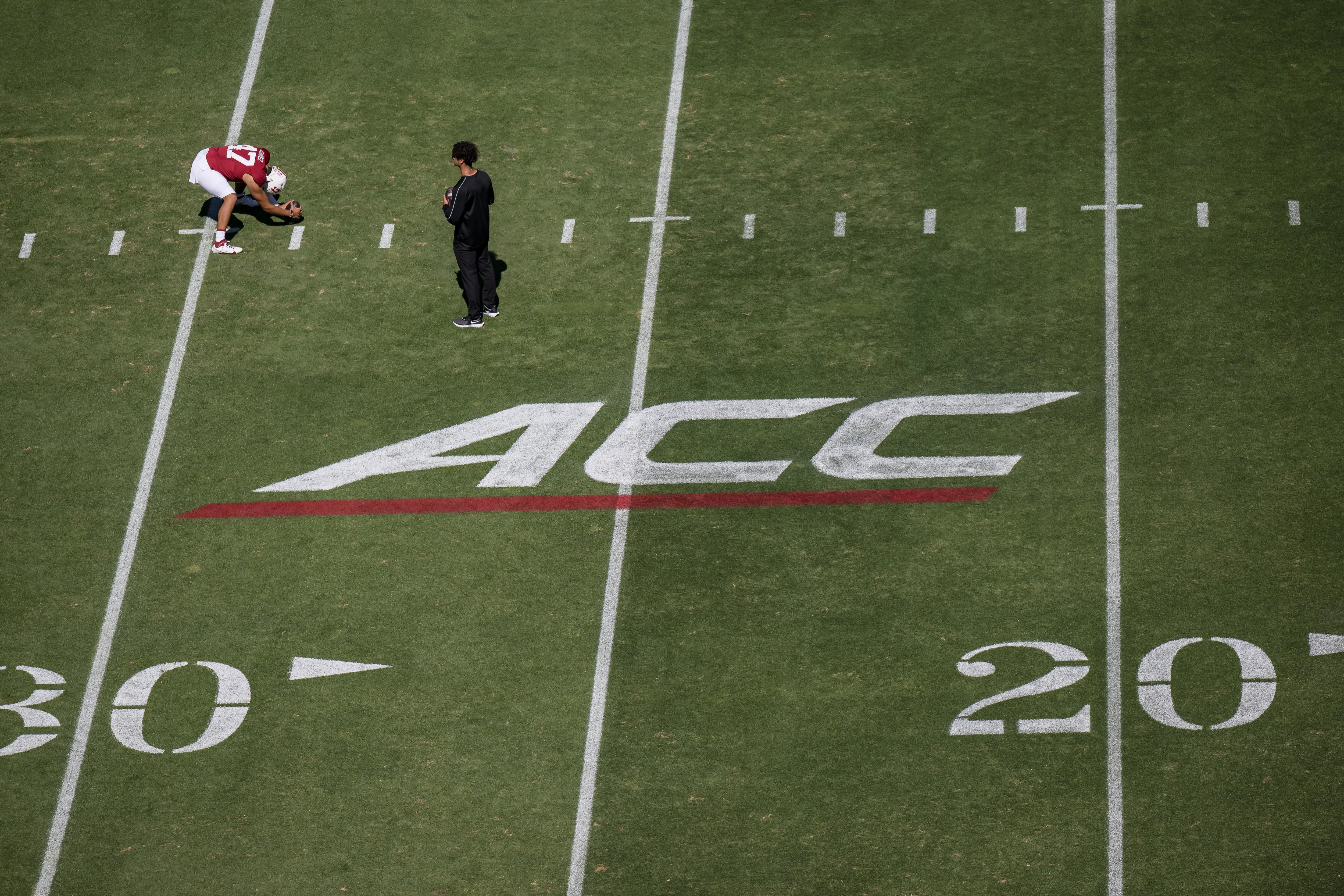The 127th Big Game will kick off on Saturday. However, despite the longstanding tradition, this game will be the first in a new conference. Stanford, along with its biggest rival, UC Berkeley, officially started competing in the Atlantic Coast Conference (ACC) in August. Three and a half months into the ACC and days before the Big Game, student-athletes expressed their thoughts on the new conference — and the new meaning of rivalry in the ACC era.
Seasoned veteran wide receiver David Kasemervisz ‘25 signed for the Cardinal in December 2020. At the time, Stanford was in the Pac-12 Conference, of which the University had been a member since 1918. For the first three years of Kasemervisz’s college career, Stanford football visited the same stadiums and competed against the same opponents they had for decades.
“It’s sad to see a lot of these teams that played each other not play each other anymore,” said Kasemervisz. “[It’s like losing] rivalries with other schools.”
However, Kasemervisz does not think that the rivalry with Cal has been negatively affected. “If anything, it’s a little bit better as [it’s] our last Pac-12 opponent that we still play,” he said.
In regards to the change in travel for Stanford football due to the ACC move, Kasemervisz said the season was not much different than those of previous years. Stanford had six away games; two that happened before the academic quarter ramped up. Two games were in the Bay Area — at Cal and San Jose State. In addition, football has the luxury of flying charter, which saves time and is more convenient.
“We actually have a lot of fun on the planes,” Kasemervisz said.
The time zone change to an East Coast-based conference does not often affect football because they play later in the day. However, the team did play one game against NC State at the equivalent of 9 a.m. Pacific Time. The team had to adjust their bodies to the earlier time zone during the week leading up to the game.
“We would be playing loud music as we walked in the morning meetings, just to get our bodies used to going that early in the morning,” Kasemervisz said. Besides that instance, the football team simply treated games as if they were happening in Pacific Time so that the players’ inner clocks would not be affected.
Freshman soccer player and midfielder Alex Chow ’28 offered a different perspective on the move. Chow first committed to Stanford during the winter of his junior year of high school, before the move to the ACC was announced. Though he never played for the Cardinal while the team was a member of the Pac-12, Chow is from Palo Alto and has always been a Stanford fan.
He observed that the conference swap has required a lot more travel and has made playing “a little bit more strenuous.” Soccer, unlike football, flies commercial, not charter.
Ultimately, Chow said it is “just another opportunity to play some good teams.” However, the change in conference also came with a change in the style of play that the Cardinal faces because more ACC teams play a possession-based game, according to him.
For cross country runner Julia Flynn ‘26, the conference shift was less impactful in terms of travel time. Cross country only has one conference meet a season, so this season was similar to the previous two in the Pac-12. At the ACC meet in Cary, N.C. this year, Flynn said she felt Stanford received a “very nice welcome,” but she mentioned how the team “felt kind of out of place” racing against a new group of teams.
The conference realignment has changed the nature of Stanford cross country’s rivalry with Oregon, similar to the changes in opponents Kasemervisz mentioned. Prior to the restructuring, Stanford or Oregon won 27 out of 38 women’s Pac-12 cross country championships, and 33 out of 55 on the men’s side. Now, the two colleges compete in different conferences. Similar to the traditional rivalry between Stanford and Cal, “the rivalry between Stanford and Oregon was kind of a very historic rivalry that’s been going on [for a while],” Flynn said.
However, in cross country, teams qualify for the national championships through geographically based regional championships. Oregon and Stanford, along with Cal, competed in the NCAA West Regionals this past weekend. Oregon won, and Stanford placed second in the women’s race — both teams received automatic bids to the NCAA National meet this weekend in Madison, Wis.
Even though travel time may not have increased much for the squad, the time zone changes have forced cross country runners to adjust.
“Usually, for cross country, we race sometime in the morning, and when we go to the East Coast, you have to put extra effort into waking up early enough… so that on the day of the race, you’re not really sleepy when you get to the course,” Flynn said. “You don’t want your body to feel like at 6 a.m. in the morning when you’re racing at 9 a.m. on the East Coast.”
While the move to the ACC has required a certain amount of adjustment on behalf of student-athletes who are now required to travel to the East Coast, winning ultimately comes down to who the better team is, students said. The same applies to this week’s Big Game, where Stanford and Cal will play each other for the first time as members of the ACC.
“At the end of the day, it comes down to who competes better on any given day,” Chow said.
